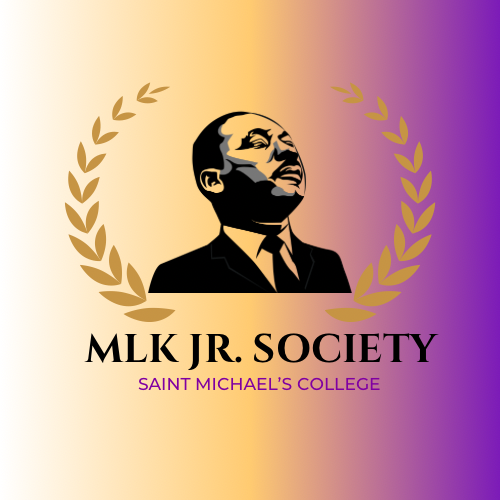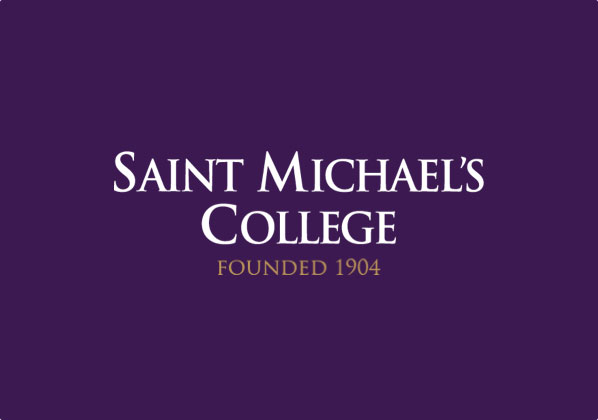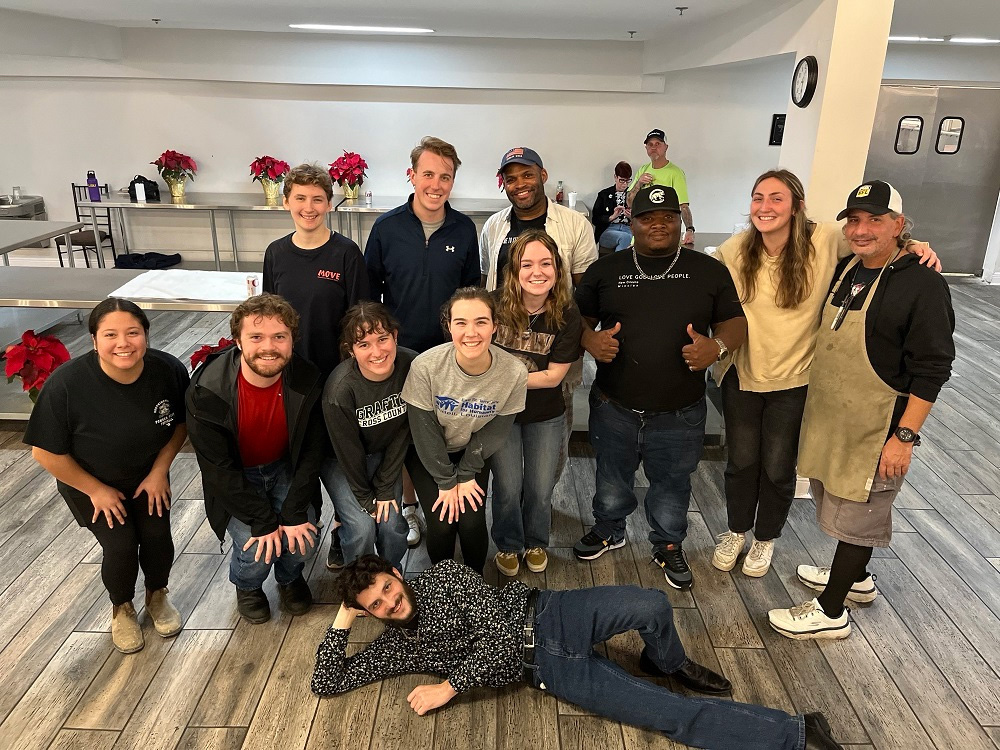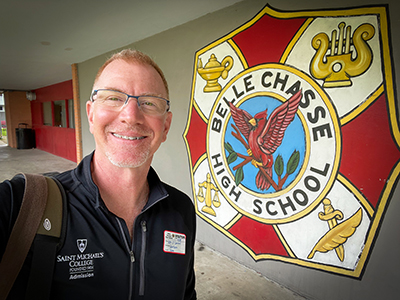Hubble data in, O’Meara’s fun begins

John O’Meara of the Saint Michael’s physics faculty (image directly above), shared the striking large image above the headline and explained what it is: “Here is an image (from Hubble) of Centaurus A, one of the nearby galaxies that we are studying in one of our programs. Most of the galaxies we work on are very far away, but this one is very photogenic.”
For the lucky handful of scientists who regularly use the Hubble Telescope to study galaxy and star formation – folks like astrophysicist John O’Meara of the Saint Michael’s College physics faculty – time is of the essence.
That is to say, an essential piece of their research is eagerly-sought but limited time stargazing through the by-now venerable space telescope that NASA launched in 1990. It’s why O’Meara was thrilled back in June 2017 when he first learned from the Space Telescope Science Institute (STScI) in Maryland that 5 of 11 international team-science proposals that he is a part of – proposals requiring highly prized Hubble observation time — had been granted as part of the telescope’s 25th, near-annual observational “Cycle” that is presently ongoing. The five research teams that include O’Meara during “Cycle 25” range in size from 3 to 15 people, he estimated.
While hearing that initial news in June was a good moment, O’Meara said this week, it’s only around now in early February with some early data trickling in from those Hubble observations since about October (with more imminent), that the real fun begins for him and his collaborating colleagues from around the world.
Alongside Hubble time, supportive funding also is a key part of the equation for Hubble researchers like O’Meara, given that all that new data must be analyzed to be of much use. To that end, O’Meara and colleagues were awarded more than $1 million to do their Hubble science, and he estimates that about $68,000 of that directly comes to Saint Michael’s for such things as summer salary, computer support, travel and publication-page support in his work.
Students in his St. Mike’s Astrophysics and Astronomy classes sometimes are among the earliest people to hear about or see new data once it arrives from initial processing by STScI onto O’Meara’s office computer. He said that it’s “a lot of fun to be teaching an astronomy course and show them something nobody has ever seen before.”
That’s the essence of his research, he said. “We’re trying to understand how galaxies get the fuel they need to form stars, which is not a well-understood process over the bulk of the history of the universe, so we need as many observations as we can to understand the full range of ways.”
The Space Telescope Science Institute is the science operations center for the Hubble Space Telescope or HST and for the James Webb Space Telescope scheduled to be launched in 2019. It was established in 1981 as a community-based science center that is operated on behalf of NASA, the worldwide astronomy community, and the general public.
“When our data comes in on Hubble, I download it and start playing with it right here in my Saint Michael’s office,” O’Meara said. “We never observe in ‘real-time’ with Hubble – it’s not like a webcam – but we can often get the data a couple hours later.” Some data, he explained, involve actual images, while other data involve spectroscopy information, where light is broken into constituent colors (as when putting light through a prism), which helps researchers understand what elements are present, and what their physical conditions are, like temperature and density.
His fellow researchers on the present projects come from “all over the place” he said: “We have Swinburne University of Technology in Melbourne, Australia, the University of Tokyo, a lot of people from the University of California system, some from STScI in Baltimore, some from Notre Dame and a lot of folks from Europe.”
“Basically we’re trying to figure out how galaxies work. That’s a really tough problem so we’re trying to attack it from as many angles as we can,” he said, explaining how he and his colleagues take images of very different galaxies, some of them 12 to 13 billion years in the past, others more nearby that can offer more details.
“These are specific scientific investigations that can only be done from space,” O’Meara said. “The data from these programs will be coming in from this year well into next year through spring 2019 — but the bulk of our funding is hitting now.”





